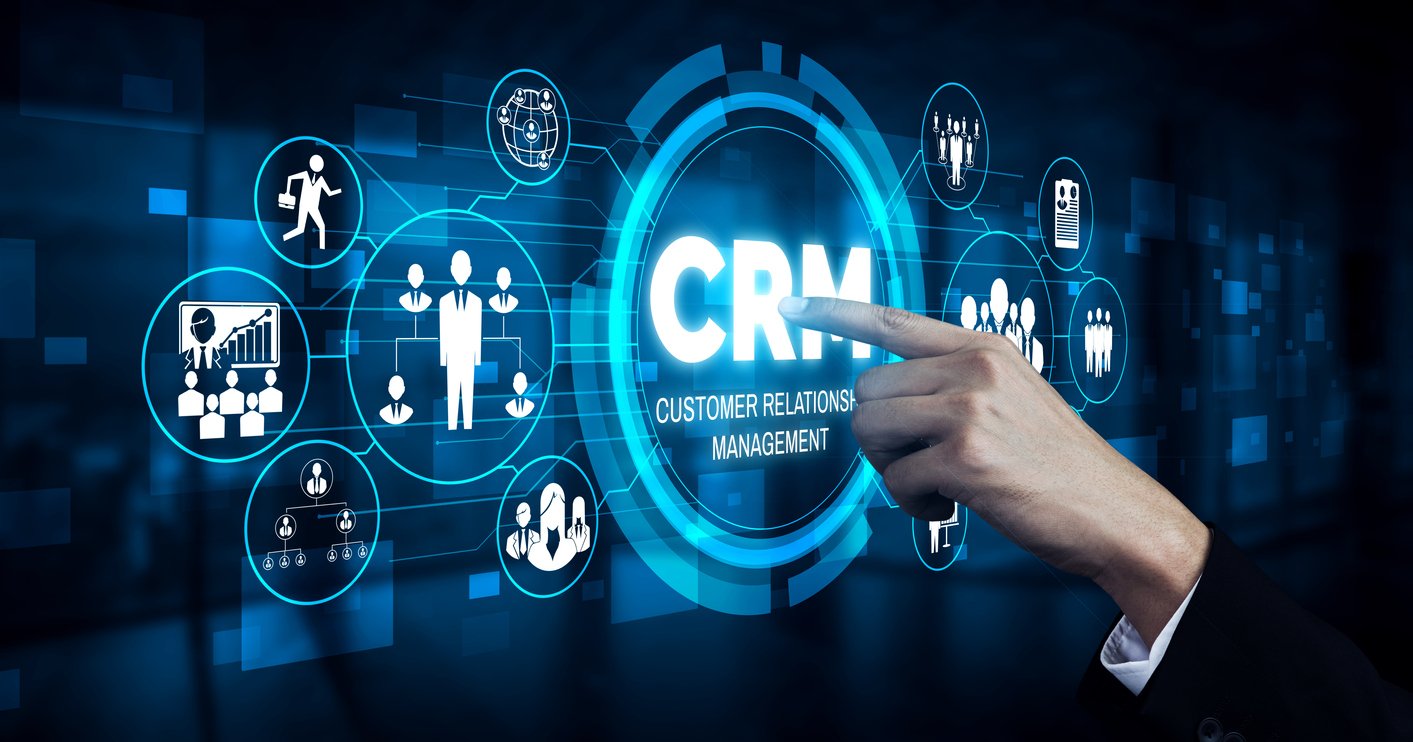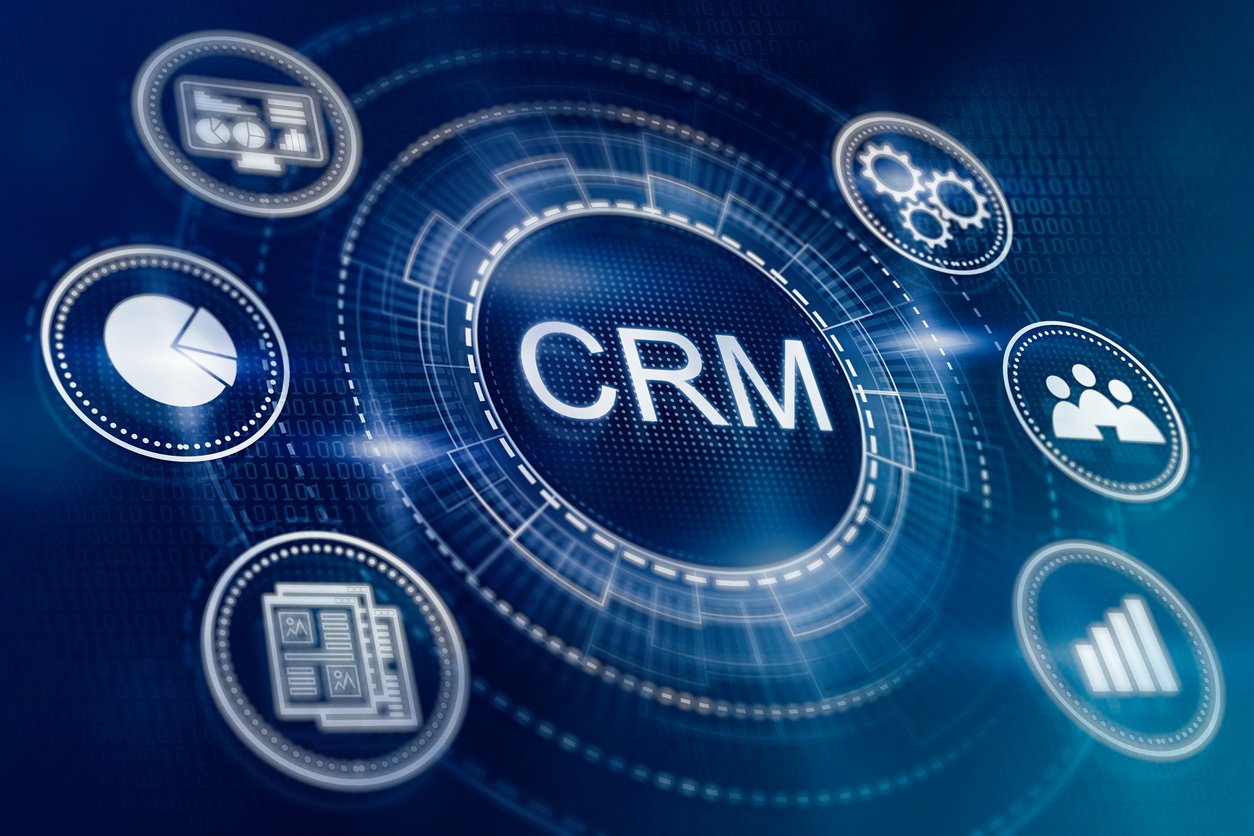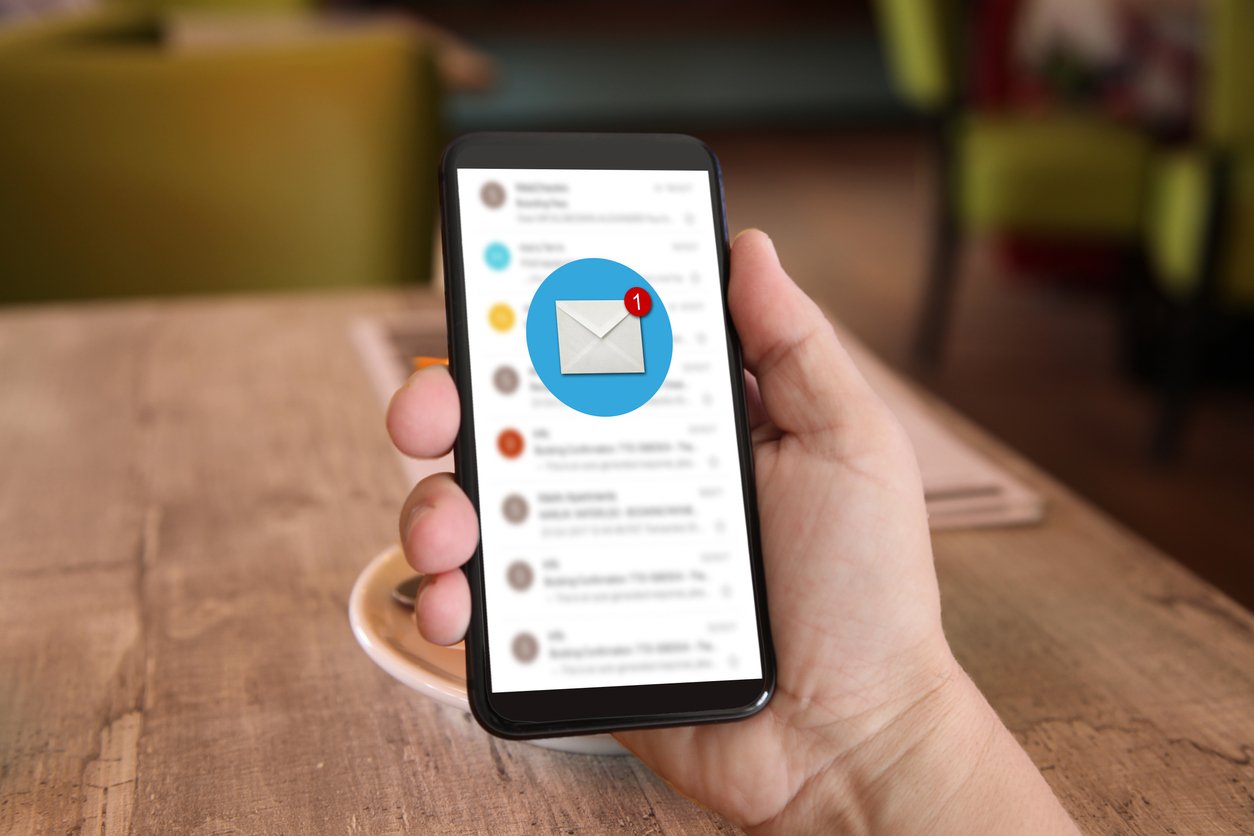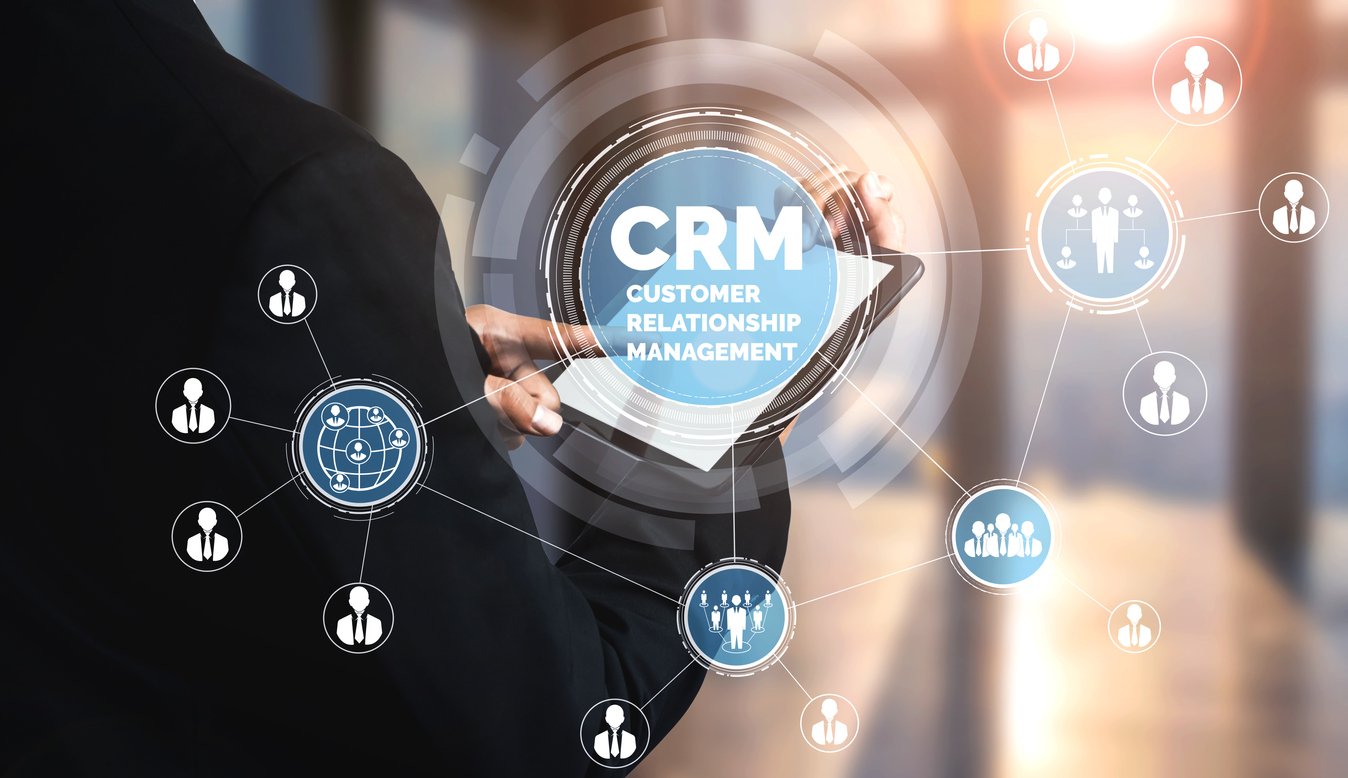
A Guide to CRM Integration [Types, Benefits & Examples]
 Updated on
Updated on
 By Bradley Kovacs
By Bradley Kovacs
Bradley Kovacs
Bradley has been passionate about technology since childhood, starting with Microsoft Flight Simulator at age six. In college, he automated his data e...
learn more
Bradley Kovacs
Bradley has been passionate about technology since childhood, starting with Microsoft Flight Simulator at age six. In college, he automated his data e...
Table of Contents
Table of Contents
Businesses manage important customer information daily, including touch points from various tools, software, apps, and systems. Purchase histories, preferences, and interactions with email and marketing campaigns are also monitored to identify areas of improvement.
Companies can use these insights to provide better customer experiences that benefit both parties.
However, for this to be successful, organizations must integrate and organize data, retrieve insights from it, and act on the newly found cognizance. Businesses are driven forward with data-based decisions and actions!
This article explores CRM integration, highlights the different types, and showcases the benefits of customer relationship management.
Let's dive into why the correct CRM integration is key to the success of your business.
CRM Integrations Overview
Customer relationship management systems are vital for companies who want to understand their clients better and provide a personalized experience. CRM software helps businesses optimize the customer journey, analyze consumer behaviors, and track client or employee interactions.
However, CRM integration with other systems and tools already in your existing tech stack is crucial to maximizing the platform's advantages.
CRM integrations with other tools and platforms can improve your marketing campaigns, personalize customer interactions, and facilitate data-driven decisions. The key to successful CRM integrations is choosing the right software to meet your business needs, implementing it effectively, and training your team to utilize it.
Types of CRM Integrations
VoIP CRM Integration
VoIP CRM integration refers to integrating a CRM system with a Voice over Internet Protocol (VoIP) solution. Companies can handle all client interactions in a centralized system, including phone calls, voicemails, and call recordings. CRM with VoIP integration allows businesses to monitor customer interactions, examine call data, and enhance customer support.
Here are a few benefits of VoIP CRM Integration:
- Improved customer service - Since all customer interactions are centralized, agents can easily access customer data and history to provide more individualized and practical support.
- Better call tracking - Businesses can track call data like duration, frequency, and outcome by combining CRM VoIP integration. Boosting sales and client service can be accomplished by analyzing this information and making it actionable.
- Enhanced customer experience - Organizations utilize call data to personalize customer interactions and offer a more seamless experience thanks to VoIP CRM integration.
VoIP CRM integration is valuable for companies looking to improve their customer service operations. The amalgamation of software enables companies to manage customer interactions more efficiently while providing valuable insights into consumer behavior and preferences.
Ringy is a preferred CRM with built-in VoIP and local caller ID options. Our software was developed to help make communication straightforward between teams and customers.
Application Integration
This is the process of integrating a CRM system with other programs, such as project management tools, marketing automation software, and accounting software. Application integration allows businesses to streamline their workflows and improve productivity by eliminating the need for manual data entry while reducing the risk of errors.
- API integrations - Application programming interfaces allow various programs to communicate with each, enabling functionality and data sharing between both platforms. For instance, When an organization integrates its email marketing tool and CRM platform, APIs transfer marketing campaigns and customer data between the two systems.
- Workflow application integrations - Multiple programs aid in automating company workflows and processes. For example, sales or marketing automation tools may be included in an enterprise's CRM integrations to streamline the lead nurturing and management process.
- Calendar and email platform integrations - Task management applications like Microsoft Outlook and Gmail allow users to coordinate conversions or appointments with their built-in calendars. Over 70% of people depend on a digital calendar, meaning ensuring schedules and times are uniform across systems is essential.
Modern business operations require CRM integration with other software to facilitate fantastic customer experiences, collaborations, and work processes. Combining the applications you already use with a customer relationship management system gives your team the information they need to succeed.
Data Integration
A lead's email and name are nothing much to go by if that is all entered into the CRM software. How can sales teams gauge a prospect's purchasing interest or preferences?
Data appending utilizes CRM integrations to bring data from external sources. A CRM platform connects directly with third-party applications that store other critical information about your clients or business.
Here are a few bonuses of data and CRM integration:
- Higher quality data - When CRM systems integrate with other data sources, organizations can guarantee accurate and up-to-date information.
- Improved data analysis - With access to customer data across multiple sources and channels, companies can analyze information more effectively while finding actionable steps.
- Enhanced decision-making - Data integration enables organizations to make more educated decisions based on real-time data, enhancing customer satisfaction and sales success.
CRM integration with a data platform should be a no-brainer. Once the data is unified in a centralized location, it becomes easier for teams to access it from a single system.
Marketing Software Integration
Marketing automation and outreach are crucial for nurturing leads and building customer relationships. Integrating your CRM with marketing tools allows you to:
- Email Marketing: Effortlessly segment your contact list within the CRM and launch targeted email campaigns directly through your marketing automation platform. This eliminates the need for manual data transfer and ensures your messaging reaches the right audience.
- SMS Marketing: Integrate SMS marketing tools with your CRM to send personalized text messages for appointment reminders, special offers, or quick updates. This can significantly boost engagement and response rates.
- Social Media Marketing: Social media is a powerful tool for connecting with customers. By integrating social media management platforms with your CRM, you can schedule and monitor social posts, track customer interactions, and gain valuable insights into social media performance.
These marketing integrations streamline your efforts and ensure all customer interactions, from social media engagement to email campaigns, are documented within your CRM, providing a complete customer journey view.
Technology and social media have evolved your customers' expectations. Social media is growing in popularity as a means for clients to ask companies questions in the most convenient way possible.
Utilizing a social media CRM integration assists organizations in enhancing marketing efforts and the customer experience
Below are some objectives businesses can accomplish with social media CRM integration:
- Provide improved customer support - CRM social media integrations allow teams to chat with the client where they hang out online most often. All interactions are kept in one palace, so clients won't have to contact you again about a past or recurring issue because the cRM chronologically stores the entire conversation history.
- Obtain better customer knowledge - How customers communicate with your company, the posts they interact with, and the brands they follow are visible on social media. CRM integration with social media gives the sales team insights into the client's personality traits, opinions about your brand, and purchasing habits.
- Build brand credibility - With social media integration, businesses can manage customer inquiries on social media platforms, providing a more seamless and efficient customer service experience.
By leveraging social media CRM integrations to elevate customer relationships, your brand will begin to build more rapport. Sales teams can nurture and manage prospect relationships by utilizing data retrieved from social media to tweak marketing campaigns or outreach efforts.
Accounting Software Integration
Integrating your CRM with accounting software like invoicing and payment processing tools automates several manual tasks and improves financial management. Here's how:
- Automate Invoicing: Seamlessly generate invoices based on sales data stored in your CRM. This eliminates the need for re-entering information and reduces errors.
- Track Payments: Gain real-time visibility into customer payments directly within your CRM. This allows you to identify overdue payments and take prompt action.
- Manage Financial Data: Consolidate customer information and financial data from your CRM and accounting software for a holistic view of your customer's financial relationship with your business.
By integrating accounting software with your CRM, you can streamline financial processes, improve cash flow, and gain valuable insights into customer spending habits.
Payment Integration
There are numerous reasons why CRM integration with payment processors is gaining popularity. If the pandemic taught us anything, technology has the power to change how we do business and manage customers.
CRM integration with payment gateways provides enterprises with many perks, including streamlining the checkout process, offering a more secure payment method, and keeping all transactional data in place.
Here are two other reasons to connect your CRM to the payment process:
- Convenience for clients - CRMs with built-in or integrated payment options significantly enhance the customer experience and support long-term relationships. If your procedures are simple and consider the clients' demands, you can expect more repeat business.
- Centralize financial data - Payment gateway and CRM integration are essential because it stores your customer database in a centralized location. Keeping customer information across multiple platforms increases costs, creates duplicate work, destroys team morale, and is slow. With CRM integration with payment processors, sales teams can quickly generate invoices based on pre-populated correct data about the client and accept payment on the same system.
Automatically calculating job costs or creating financial documents based on pre-saved data is made easier with payment processors and CRM integration. Users can generate and share credit notes, purchase orders, and estimates within a few clicks.
Mobile Integration
About 2 billion people exclusively access the internet from their smartphones, with 63% of web traffic coming from mobile devices. It only makes sense that your representative would require a CRM integration with mobile.
With CRM on mobile, teams can manage key information in real-time, whether it's customer services, marketing, or sales.
Here are a few advantages of performing CRM integration with a third party on a native mobile platform:
- Dial directly from within the CRM system
- Access the dashboard from anywhere
- Share and open files
- Plan meetings utilizing mobile calendar integration
A mobile-capable CRM system is an investment that can pay dividends throughout a business. With the reach and usage of mobile devices increasing, it would be silly for organizations not to invest in this incredible technology.
Web Integration
Linking a CRM to your website is an excellent way to track traffic, monitor page conversions, or find areas of improvement. By integrating CRM with web stores, landing pages, or business sites, users can invite visitors to submit lead inquiries, book timetabled sessions, update their profile credentials, and much more.
CRM integration with a website offers a powerful tool that helps improve client relationships, organize your data, and boost revenue. This information is delivered automatically to the CRM system whenever customers fill out forms, place orders, or leave chat remarks.
Benefits of CRM Software Integration

Trustworthy Reporting
Data is integral to any organization. It can be extracted from several sources, including CRM technology, applications, business software, Google Analytics, and social media. However, this information is useless until sorted, cleaned, analyzed, and made actionable.
Organizations of all sizes utilize social media platforms to communicate with customers and promote their products. The metrics retrieved from social media can help business owners assess their current market position. Google Analytics is also a critical tool company proprietors use to monitor website traffic and conversion rates. Nevertheless, these tools can't be the only source for customer interaction insights.
CRM software integrations assist in extracting those metrics and data while turning them into a visual representation of company performance.
When a business is dedicated to recording error-free data and maintaining clean information, it utilizes a CRM system to augment, tabulate, and organize information, which produces better reporting results.
CRM systems have an advantage over other customer relationship management platforms because users have a complete overview of who interacted with the organization and how. This is one of the most significant benefits when companies concentrate on recording usable data.
User Interfaces That Visualize Data
Utilizing a static document or spreadsheet to manage a business's data requires that users import or input information manually. Not only is this tedious, but it can be exceptionally time-consuming.
That's where CRM systems step in!
When CRM integration is performed correctly, the software's dashboard can be set up to meet your business's and its employees' individual needs.
For instance, the sales managers would be most interested in conversion and churn rates, specifically, the number of deals closed in a particular period, such as one month or year. Users can set up the interface to immediately display the results they're looking for, including how many items were sold, at what prices, and who purchased those products.
The table below highlights the most common CRM integration tools and their visual advantages:
|
CRM Integration Tool |
Description |
Benefits |
|
Report Builders |
With a report builder tool, you can create custom report visualizations based on specific data sets and parameters. |
Allows users to create highly personalized reports pertinent to find patterns and insights that could otherwise go unnoticed. |
|
Data Visualization Tools |
A set of tools and techniques for generating visual representations of data, such as charts, graphs, and heat maps. |
Enables users to convey complex data to peers and to recognize patterns and anomalies. |
|
Interactive Maps |
Geographic data is represented in a dynamic map interface. |
Lets sales teams identify key accounts and opportunities in specific regions |
|
Social Media Monitoring |
All social media activity relating to an organization or brand can be tracked with a social media monitoring tool. |
Advertising divisions can measure sentiment, identify influencers, and keep up with new market trends |
A dynamic user interface that contains or can integrate with various reporting tools helps businesses track and monitor multiple areas of their operations. Ensure you select a platform that makes CRM integration with third-party service providers straightforward to produce satisfactory results.
Automated Personalized Outreach
CRM software helps businesses consistently capture insights and data about their industry, market, and audience to assist in creating more personalized outreach messages or content. This can be beneficial for both automated campaigns and manual efforts.
Automated messaging and dynamic content are sent to segmented prospects to target them better. Different DRIP campaigns are then utilized to capture the lead's attention and drive them to take action.
With CRM platforms, users can target specific audiences with a series of automated campaigns that are triggered by particular activities; then, DRIP campaigns are used to keep the prospect moving through the sales pipeline.
For example, on a luxury car rental site, if someone regularly chooses an SUV, instead of sending them generic emails about the vehicles you have available, they can be added to a DRIP campaign for people who prefer a sport utility vehicle.
Streamlined Workflows
We all know by now that automation is a huge advantage of CRM software that can be witnessed throughout an organization. Here are three ways CRM integrations can boost productivity and efficiency in the workplace:
- DRIP campaigns minimize the time required to email and nurture leads.
- Using built-in AI or customer parameters, sales teams can score leads faster while prioritizing prospects better and converting them to paying clients.
- Automated messaging and chatbots can handle simple customer questions, such as the delivery status or updates on new product upgrades.
With a streamlined workflow, marketing teams have more time to develop campaigns that resonate with the target market, test various strategies based on analytical insights, and turn data into a usable format. Sales teams can concentrate on selling the correct service or product to the right client.
Customer support representatives can be committed to providing clients with an efficient service, including answering their questions, troubleshooting problems, or other complicated customer relationship tasks.
Accessible Collaboration
Contact information, notes, needs, interactions, conversations, and more are recorded in your CRM system. Colleagues can easily retrieve customer data using a cloud-based CRM, meaning users will continually be updated wherever they are.
Moreover, multiple people can follow the progress of a sale or work on a single file simultaneously with a CRM platform s built-in collaboration tools.
Here are additional features and the benefits you'll receive from CRM integrations with collaboration software:
|
Collaboration Application |
Description |
Advantages |
|
Shared Task List |
A list of tasks that can be assigned to specific team members and updated in real-time |
Increases responsibility and productivity by enabling team members to remain on top of project deadlines and duties. |
|
Calendar Integration |
Integration with a shared calendar that displays upcoming meetings, appointments, and deadlines |
Helps team members maintain focus and appropriately plan their responsibilities |
|
Document Management System |
Storing and sharing files, such as project plans, reports, and presentations through a document management system (DMS) means vital information is secure. |
Enables team members to access and work together on crucial documents whenever and wherever they want. |
|
Chat and Instant Messaging |
Real-time communication and collaboration among team members are essential in the digital work landscape. Instant messaging and live chat tools help make this possible |
It can lessen the need for long email chains and enhance responsiveness and communication |
|
Video Conferencing |
Businesses utilize this software for remote meetings and collaboration. These applications generally include screen sharing, and other features |
Enable remote connections and collaboration amongst team members, increasing accessibility and versatility. |
Everyone accessing the CRM system can work harmoniously through a shared record. For instance, when sales employees chat with clients and learn more about their preferences, they can note the specific requirement so that marketing teams can tailor content to the prospect's needs.
CRM integration eliminates potential data silos when businesses incorporate all their native software into an existing tech stack.
Centralized Data
One of the biggest challenges businesses face is data scattered across different applications. CRM integrations eliminate this issue by creating a central hub for all your customer data. This includes contact information, purchase history, communication records, and any other relevant details stored within various software tools.
By integrating marketing automation platforms, accounting software, or even VoIP systems with your CRM, you ensure all customer interactions are captured and readily accessible. This eliminates the need for manual data entry, reduces errors, and provides a single source of truth for your customer information.
Enhanced Customer Insights
A centralized data repository within your CRM, fueled by integrations, empowers you to gain a deeper understanding of your customers. You can analyze buying habits, identify trends, and track customer sentiment across different touchpoints. This rich data allows you to:
- Segment Your Customer Base: Create targeted marketing campaigns based on demographics, interests, and purchase history.
- Personalize Customer Interactions: Tailor your communication and recommendations to individual customer needs and preferences.
- Identify Upsell and Cross-sell Opportunities: Leverage customer data to identify products or services relevant to their past purchases and interests.
These insights, derived from effective CRM software integration, empower you to build stronger customer relationships and drive sales growth.
Better Reporting and Analytics
By integrating CRM software with other business systems, you can consolidate data from multiple sources and create comprehensive reports and dashboards. This enables you to track key performance indicators (KPIs), monitor sales and marketing effectiveness, and identify trends and opportunities.
For example, CRM integration tools can combine data from sales, marketing, and customer service to provide a holistic view of business performance. Better reporting and analytics help businesses measure the success of their strategies, optimize processes, and drive continuous improvement.
CRM Software Integration Best Practices
Successfully integrating your CRM software with other business tools requires careful planning and execution. By following best practices, you can ensure a smooth integration process and maximize the benefits of your CRM system. Here are some CRM software integration best practices:
Define Integration Goals
The first step is to clearly define your goals for CRM integration. What specific problems are you trying to solve? What functionalities do you want to achieve? Having a clear understanding of your objectives will guide your approach and help you choose the right integration tools.
For example, if your goal is to improve communication and streamline workflows, you might prioritize integrating a VoIP system with your CRM. On the other hand, if your focus is on marketing automation, integrating email marketing tools would be a top priority.
Choose the Right Tools
The CRM landscape offers various of integration options, including pre-built connectors, third-party integration platforms, and even custom development. Carefully evaluate your needs, technical expertise, and budget when selecting integration tools. Consider factors like:
- Ease of Use: Look for integration tools that are user-friendly and require minimal technical expertise to set up and maintain.
- Scalability: Choose an integration solution that can scale with your business needs as your data volume and integrations grow.
- Security: Ensure the integration tools you choose prioritize data security and comply with relevant regulations.
By carefully selecting the right CRM integration tools, you can ensure a smooth and secure connection between your CRM and other business applications.
Data Mapping and Standardization
One of the critical aspects of successful CRM integration is ensuring data consistency across different systems. This involves data mapping and standardization. Data mapping defines how data fields in your CRM correspond to those in the other software you're integrating with.
Standardization ensures that data formats (e.g., date format, currency) are consistent across all platforms. Inaccurate data mapping or inconsistencies can lead to errors and hinder the effectiveness of your CRM.
Test Integrations
Thorough testing is crucial before deploying any CRM integration. This involves testing data flow, functionality, and user experience. By testing the integration extensively, you can identify and address any potential issues before they impact your daily operations.
Continuous Monitoring and Optimization
CRM integrations are not a one-time fix. As your business evolves and your CRM usage matures, your integration needs may change. Regularly monitor the performance of your integrations to ensure they are functioning optimally. Look for opportunities to further optimize data flows, refine reporting, and explore additional integrations that can enhance your CRM's capabilities.
Training and Support
Even with the most user-friendly integration tools, providing proper training for your team is essential. Train your sales, marketing, and customer service personnel on how to leverage the integrated CRM effectively. Additionally, establish clear support channels to address any questions or issues that may arise after the integration is deployed.
CRM Integration - Conclusion
CRM integration is an essential process that helps businesses optimize their operations and provide a better customer experience. Companies can improve efficiency, accuracy, and collaboration by connecting different systems and automating data transfer. The benefits of CRM integration are clear, and it's no wonder that it has become a top priority for many organizations.
If you're considering CRM integration, it's essential to do your research and select a solution that meets your unique needs. Consider factors such as compatibility, scalability, security, ease of use, customer support options, and choosing a vendor or service provider you can trust.
At Ringy, we understand the importance of CRM integration and offer a seamless and customizable solution to meet your needs. Our cloud-based platform lets you connect your CRM with other systems, automate data transfer, and streamline your business processes. Our solution is easy to use, scalable, and secure, and our customer support team is always available to help.
So if you're ready to take your business to the next level, request a demo to find out more.

Skyrocket your sales with the CRM that does it all.
Calling? Check. SMS? Check. Automation and AI? Check. Effortlessly keep in touch with your customers and boost your revenue without limits.

Take your sales to new heights with Ringy.
Sales in a slump? Ringy gives you the tools and flexibility you need to capture leads, engage with them, and turn them into customers.
Subscribe to Our Blog
Enter your email to get the latest updates sent straight to your inbox!
Categories
Related Articles




































































































